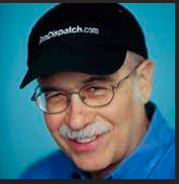But Stalin surprised Mao by refusing to give up the territorial concessions in northern China that Moscow had won at the 1945 Yalta conference, saying the issue couldn't even be discussed until their subsequent meeting. For the next 17 days, Mao literally cooled his heels waiting during a freezing Moscow winter inside a drafty dacha where, as he later recalled, "I got so angry that I once pounded the table."
Finally, on January 2, 1950, Mao cabled the communist leadership in Beijing:
"Our work here has achieved an important breakthrough in the past two days. Comrade Stalin has finally agreed to" sign a new Sino-Soviet Treaty of Friendship."
With Russia giving up its territorial claims in exchange for assurances about demilitarizing the long border between the two countries, their leaders signed a Treaty of Friendship and Alliance in February 1950. It, in turn, sparked a sudden flow of Soviet aid to China whose new constitution hailed its "indestructible friendship" with the Soviet Union.
But Stalin had already planted the seeds for the Sino-Soviet split to come, embittering Mao, who later said Russians "have never had faith in the Chinese people and Stalin was among the worst."
At first, the China alliance proved a major Cold War asset for Moscow. After all, it now had a useful Asian surrogate capable of dragging the U.S. into a costly conflict in Korea without the Soviets suffering any casualties at all. In October 1950, Chinese troops crossed the Yalu River into a Korean maelstrom that would drag on for three years and cost China 208,000 dead troops as well as 40% of its budget.
Following Stalin's death in May 1953 and the Korean armistice two months later, the new Soviet leader Nikita Khrushchev tried to repair relations by presiding over a massive, yet distinctly inequitable program of economic aid to China. However, he also refused to help that country build an atomic bomb. It would be a "huge waste," he said, since China was safe under the Soviet nuclear umbrella. At the same time, he demanded the joint development of uranium mines Soviet scientists had discovered in southwest China.
Over the next four years, those initial nuclear tensions grew into an open Sino-Soviet split. In September 1959, Khrushchev visited Beijing for a disastrous seven-hour meeting with Mao. In 1962, Mao finally ended diplomatic relations entirely, blaming Moscow for failing to launch a nuclear strike on the U.S. during that year's Cuban missile crisis.
In October 1964, China's successful test of a 22-kiloton nuclear bomb marked its arrival as a major player on the world stage. That bomb not only made it an independent world power but transformed the Sino-Soviet split from a war of words into a massive military confrontation. By 1968, the Soviet Union had 16 divisions, 1,200 jet aircraft, and 120 medium-range missiles arrayed along the Sino-Soviet border. Meanwhile, China was planning for a Soviet attack by building a nuclear-hardened "underground city" that spread for 30 square miles beneath Beijing.
Washington's Cold War Strategy
More than any other event since World War II, the short-lived Sino-Soviet alliance changed the course of world history, transforming the Cold War from a regional power struggle over Eastern Europe into a volatile global conflict. Not only was China the world's largest nation with 550 million people, or 20% of all humanity, but its new communist government was determined to reverse a half-century of imperialist exploitation and internal chaos that had crippled its international influence.
The rise of China and the conflict in Korea forced Washington to radically revise its strategy for fighting the Cold War. Instead of focusing on NATO and Europe to contain the Soviet Union behind the Iron Curtain, Washington now forged mutual defense pacts from Japan to Australia to secure the offshore Pacific littoral. For the past 70 years, that fortified island rim has been the fulcrum of Washington's global power, allowing it to defend one continent (North America) while dominating another (Eurasia).
To tie those two axial ends of Eurasia into a strategic perimeter, Cold War Washington ringed the Eurasian continent's southern rim with chains of steel -- including three navy fleets, hundreds of combat aircraft, and a string of mutual-defense pacts stretching from NATO in Europe to ANZUS in the South Pacific. It took a decade, but once Washington accepted that the Sino-Soviet split was the real thing, it belatedly began to cultivate an entente with Beijing that would leave the Soviet Union ever more geopolitically isolated, contributing to its ultimate implosion and the end of the Cold War in 1991.
That left the U.S. as the world's dominant power. Nonetheless, even without a near-peer rival on the planet, Washington refused to cash in its "peace dividend." Instead, it maintained its chains of steel ringing Eurasia including those three naval fleets and hundreds of military bases, while making multiple military forays into the Middle East (some disastrous) and even recently forming a new Quadrilateral alliance with Australia, India, and Japan in the Indian Ocean. For 15 years following Beijing's admission to the World Trade Organization in 2001, a de facto economic alliance with China also allowed the U.S. sustained economic growth.
When Putin Met Xi
Last month, when Vladimir Putin met Xi Jinping in Beijing at the start of the Winter Olympics, it proved a stunning reversal of the Stalin-Mao moment 70 years earlier. While Russia's post-Soviet economy remains smaller than Canada's and overly dependent on petroleum exports, China has become the planet's industrial powerhouse with the world's largest economy (as measured in purchasing power) and 10 times the population of Russia. Moscow's heavy-metal military still relies on Soviet-style tanks and its nuclear arsenal. China, on the other hand, has built the world's largest navy, its most secure global satellite system, and its most agile missile armada, capped by cutting-edge hypersonic missiles whose 4,000 miles-per-hour speed can defeat any defense.
(Note: You can view every article as one long page if you sign up as an Advocate Member, or higher).





